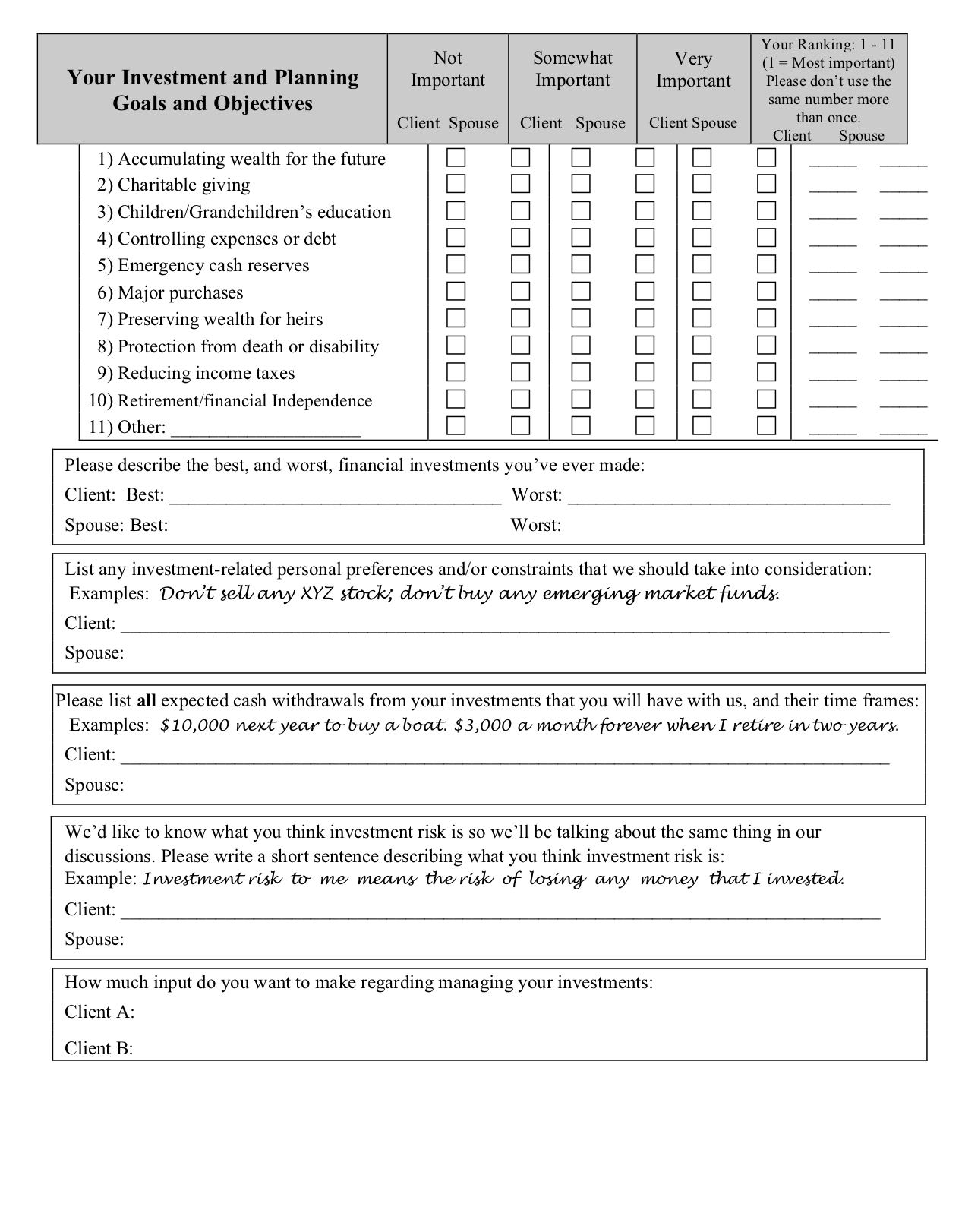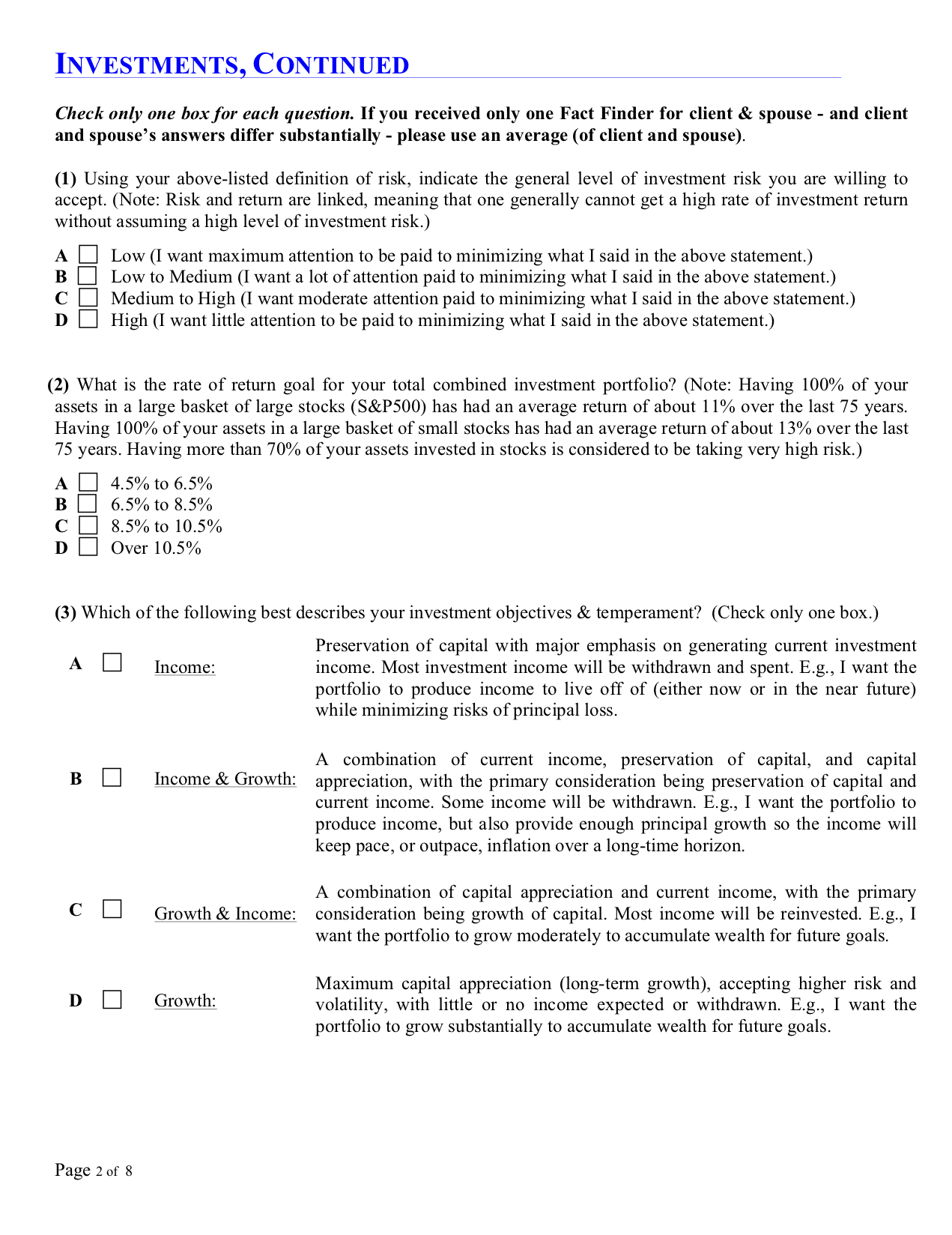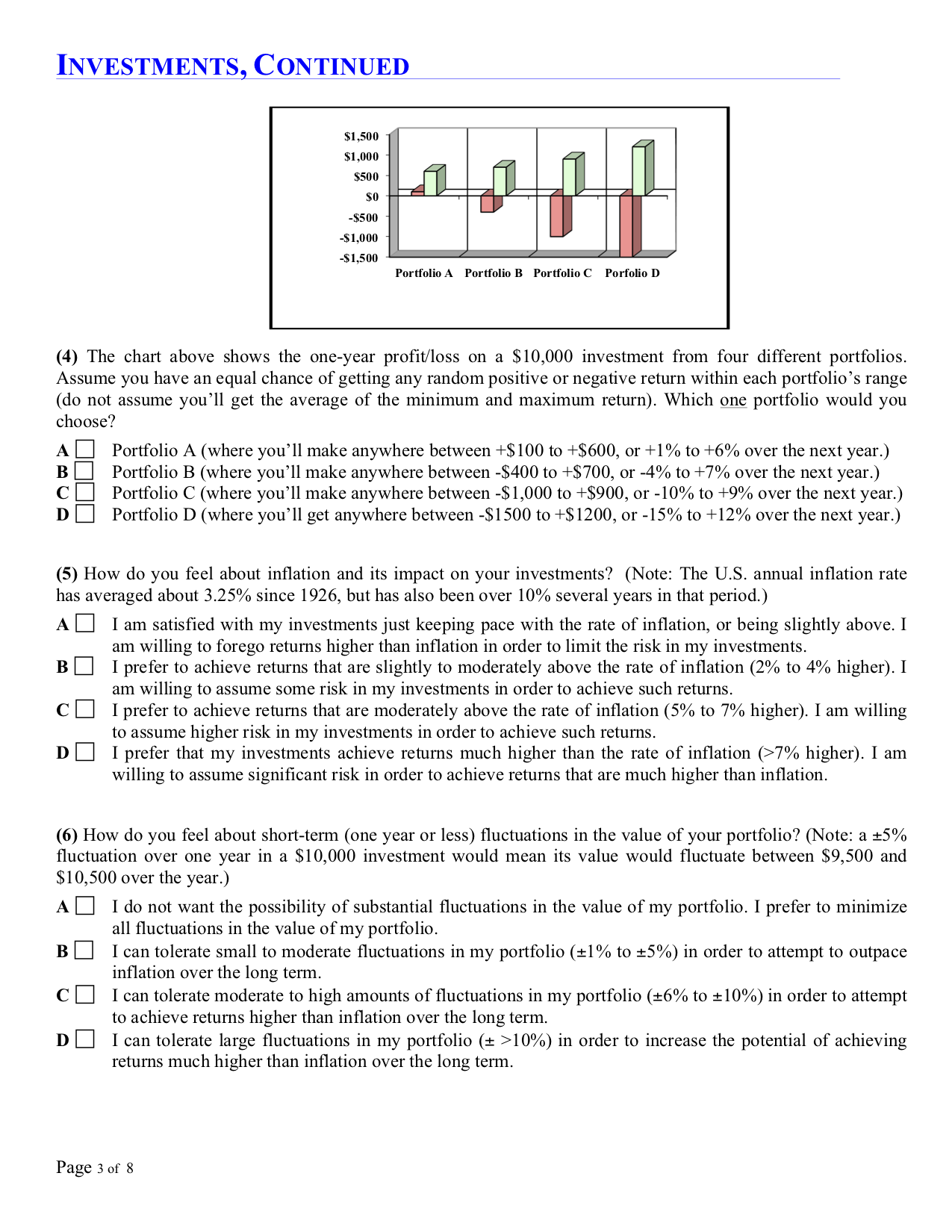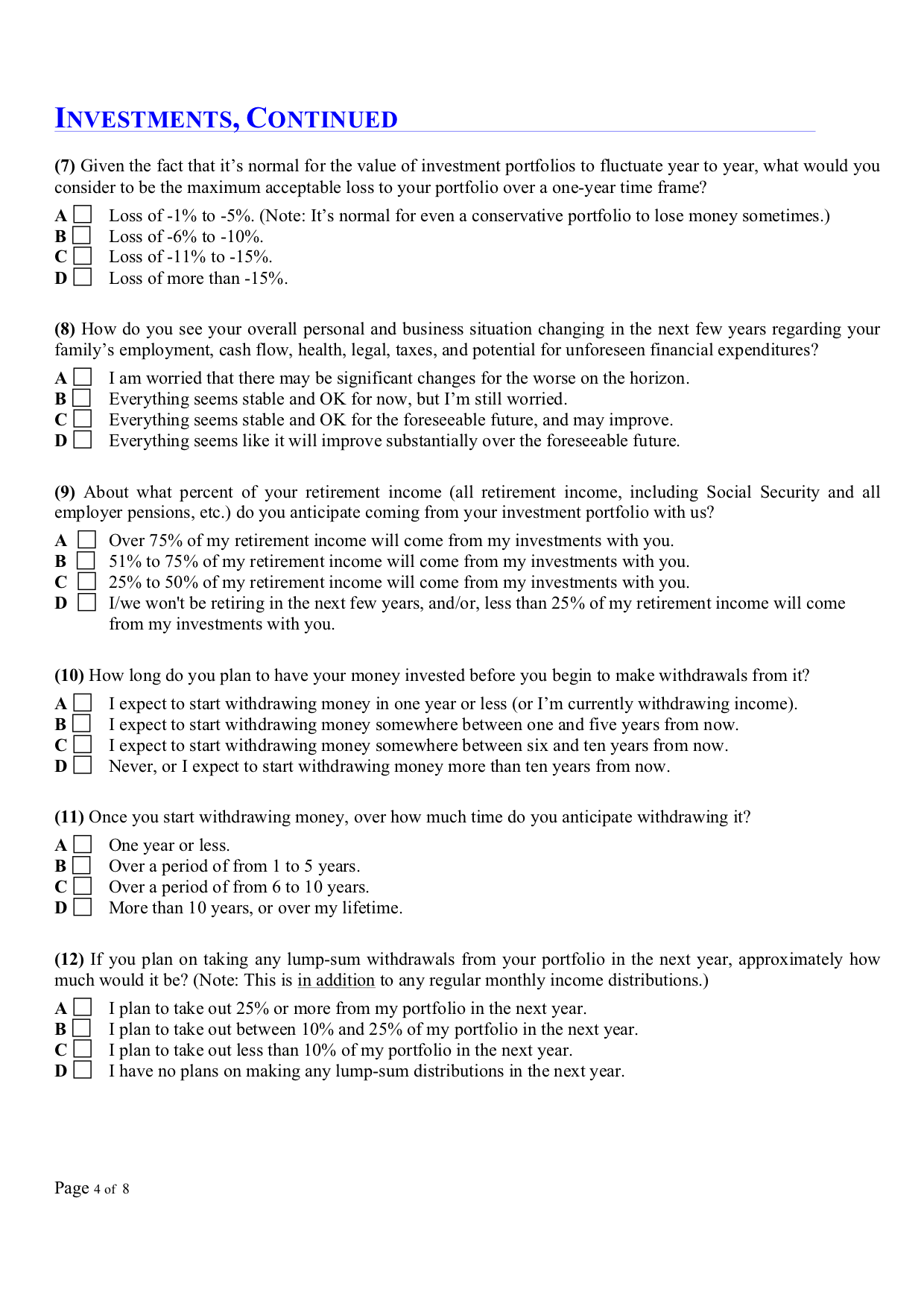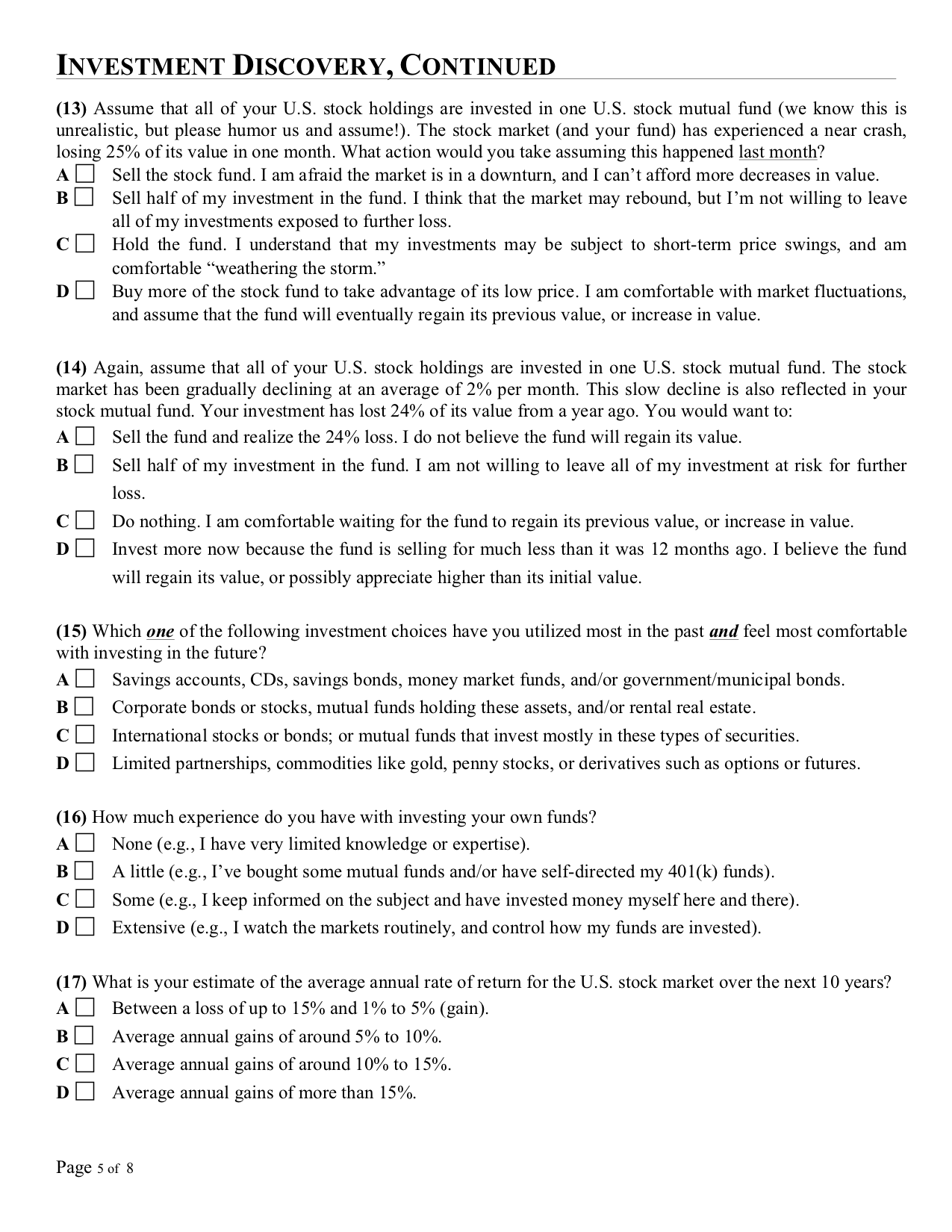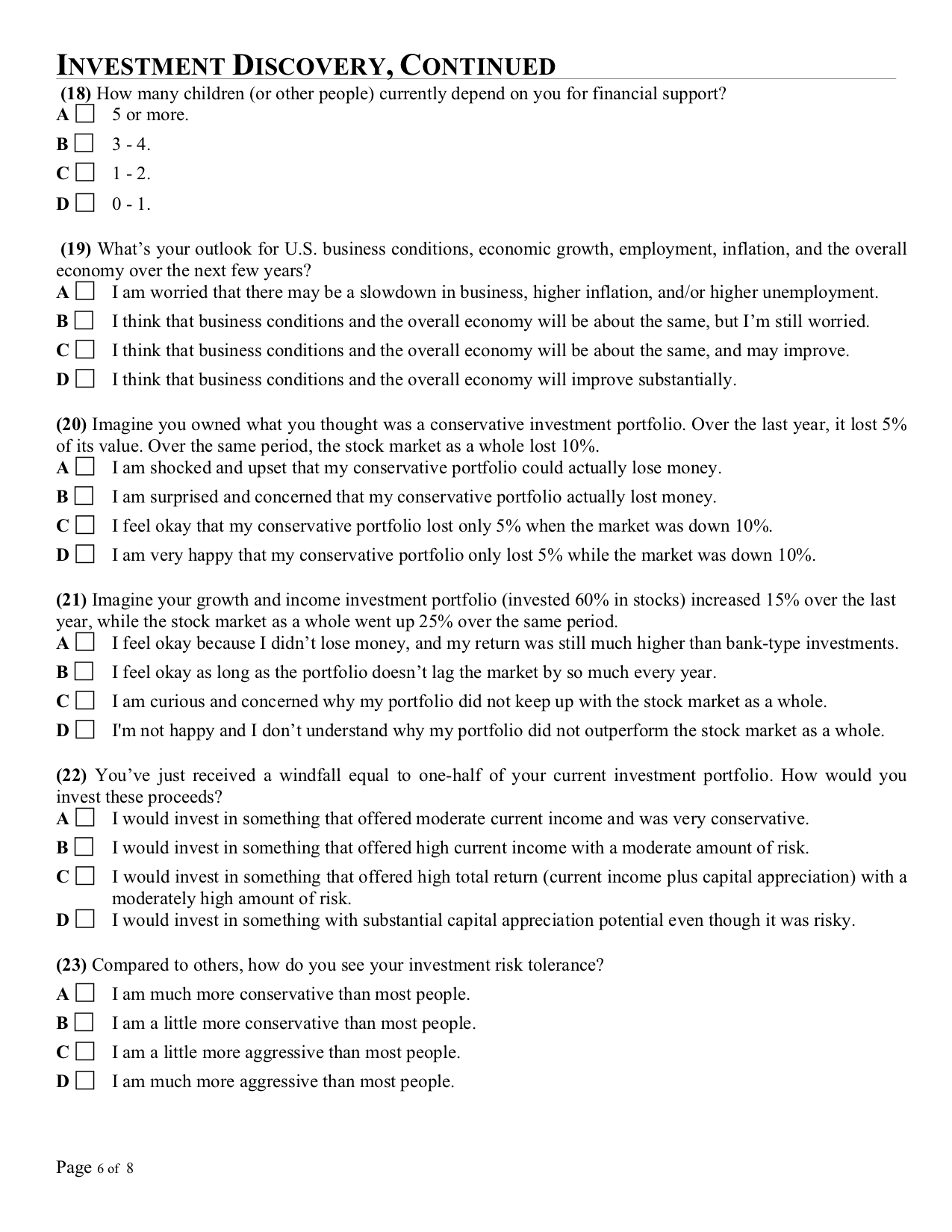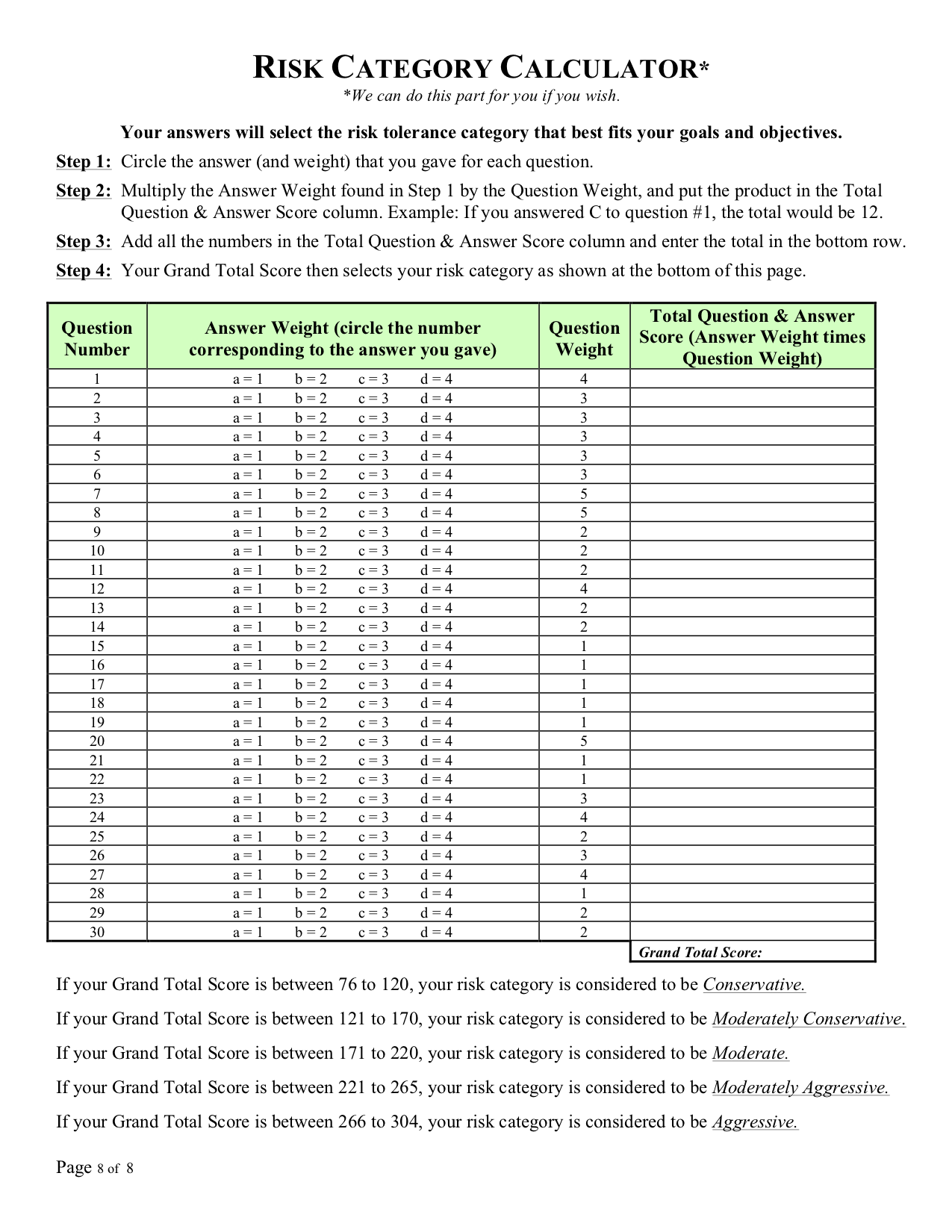You and Your Risk profile
What is Risk Profile?
A quote from Investopedia:
“A risk profile is an evaluation of an individual's willingness and ability to take risks.
A risk profile identifies the acceptable level of risk an individual is prepared and able to accept. Risk in this sense refers to portfolio risk and can be thought of as the trade-off between risk and return, which is to say the tradeoff between earning a higher return or having a lower chance of losing money in a portfolio.
Willingness to take on risk refers to an individual's risk aversion. If an individual expresses a strong desire not to see the value of the account decline, and is willing to forgo potential capital appreciation to achieve this, this person would have a low willingness to take on risk, and is risk averse. Conversely, if an individual expresses a desire for the highest possible return, and is willing to endure large swings in the value of the account to achieve it, this person would have a high willingness to take risk and is a risk seeker.
The ability to take risk is evaluated through a review of an individual's assets and liabilities. An individual with many assets and few liabilities has a high ability to take risk. Conversely, an individual with few assets and high liabilities has a low ability to take risk. For example, an individual with a well-funded retirement account, sufficient emergency savings and insurance coverage, and additional savings and investments, with no mortgage or personal loans likely has a high ability to take risk.
Willingness and ability to take risk may not always match up. For example, the individual in the example above with high assets and low liabilities may have a high ability to take risk, but may also be conservative by nature and express a low willingness to take risk. In this case, the willingness and ability to take risk differ and will affect the ultimate portfolio construction process.”
You can find below a questionnaire. In order to understand your own risk profile please complete it and summarise your points.
You can download the questionnaire here.
And here you can find the evaluation sheet.
Please insert in column “c” the values chosen in column “b” and multiply the result line by line with the corresponding value of column “d”. Please insert the values in column “e” and summarise them to arrive at your own risk profile category.
Having completed the questionnaire and evaluated yourself, you are now aware which risk profile category you belong to.
Let us assume that you are a Moderate investor and this level would require a portfolio of 50/50 which means consisting of 50% stocks and 50% bonds.But how will you be continuosly able to maintain such composition?
The Need For Rebalancing
Let us assume that you are going to have a very good, bull year and the stock part of your portfolio start doing very well, whilst your bonds are nosediving resulting suddenly in a 70/30 portfolio which corresponds to one category higher than your original risk category: Moderately aggressive.You just a short time ago put on paper that you are a Moderate person and you do not want or able to bear risks associated with a higher risk category.
Why is this a problem?
This needs immediate attention as a sudden bear market downturn will bring to life the worst of your investment self and you start making all the classical emotion based investor mistakes that will inevitable lead to loss of wealth.
Headlines of financial media will attack you day by day that the risks have become unbearable, end of world is here, etc. You must have very strong nerves not to pay attention.
Of course the media will be silent about the fact that risks associated with owning a well diversified stock portfolio have nothing to do with the common understanding of risk i.e. loss of money.In a well diversified portfolio it means the uncertainty of returns which can also be negative for relatively long period of time but on longer run they have always returned to the mean and have nicely rewarded investors. This is little wonder as capitalism continues to flourish and create wealth.
Therefore, periodical rebalancing can be regarded as a kind of investment risk management because it reinstates targeted risk structure laid down in original plan and in our case it even increases the value of the portfolio as it sells stocks on a bull market and buys relatively cheap bonds which is just the opposite average investors would do.
The process of rebalancing is the following:

